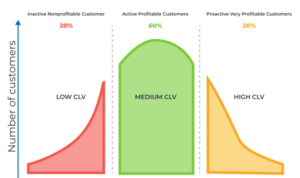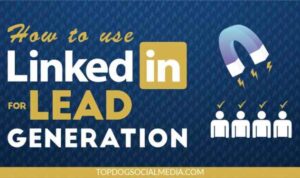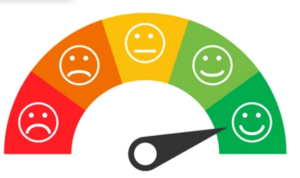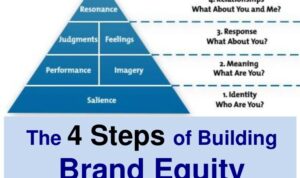Understanding Sales Cycles sets the stage for an epic journey into the world of business dynamics, where knowing the ins and outs can make or break your game. Get ready to dive into the secrets of sales cycles like a boss!
From defining sales cycles to exploring key components and strategies for optimization, this topic is your ticket to mastering the art of sales success. Let’s dig in!
Understanding Sales Cycles

In the world of business, a sales cycle refers to the series of stages that a customer goes through before making a purchase. It involves the process of identifying leads, nurturing them, and eventually converting them into customers.
Stages of a Sales Cycle
- Prospecting: Identifying potential leads and gathering information about them.
- Qualification: Determining if the leads have the potential to become customers.
- Proposal: Presenting a solution to the customer’s needs or problems.
- Negotiation: Discussing terms, pricing, and finalizing the deal.
- Closing: Getting the customer to make the purchase.
Importance of Understanding Sales Cycles
Sales cycles are crucial for businesses as they provide a roadmap for the sales team to follow. By understanding the stages involved, businesses can effectively manage their resources, tailor their strategies to each stage, and ultimately increase their chances of closing deals successfully.
Industries where Sales Cycles Matter
- Real Estate: Involves a lengthy sales cycle due to the high-value nature of transactions.
- Software as a Service (SaaS): Requires a detailed sales cycle to educate customers about the product and its benefits.
- Manufacturing: Involves a complex sales cycle due to the need for customization and long lead times.
Key Components of Sales Cycles
In the world of sales, understanding the key components of a sales cycle is crucial for success. Let’s dive into the fundamental elements that make up this process.
Lead Generation and Nurturing
Lead generation is the first step in the sales cycle, where potential customers are identified and attracted to the product or service. This can be done through various channels such as social media, email campaigns, or networking events. Nurturing leads involves building relationships with them through personalized communication and providing valuable information to guide them through the buying journey.
Customer Relationship Management (CRM) Systems
CRM systems play a vital role in managing sales cycles by organizing customer data, tracking interactions, and providing insights for better decision-making. These systems help sales teams stay organized, prioritize leads, and tailor their approach based on customer preferences and behavior.
Setting Clear Goals, Understanding Sales Cycles
Setting clear goals within a sales cycle is essential to keep the team focused and motivated. Goals can include targets for revenue, number of new customers, or conversion rates. By defining specific and measurable objectives, sales teams can track their progress and make adjustments to achieve success.
Factors Influencing Sales Cycles: Understanding Sales Cycles
When it comes to sales cycles, various factors can influence their duration and complexity. Understanding these factors is crucial for businesses to adapt and thrive in ever-changing markets.
Market Trends:
Market trends play a significant role in shaping sales cycles. For example, during times of economic downturn, sales cycles may lengthen as customers become more cautious with their spending. On the other hand, during periods of economic growth, sales cycles may shorten as customers are more willing to make purchasing decisions.
Competition:
The level of competition in the market can also impact sales cycles. In highly competitive industries, sales cycles tend to be shorter as companies strive to capture market share quickly. On the contrary, in less competitive markets, sales cycles may be longer as companies work harder to differentiate themselves and attract customers.
Consumer Behavior:
Consumer behavior is another key factor influencing sales cycles. Changes in consumer preferences, buying habits, or decision-making processes can all affect the length and complexity of sales cycles. For instance, if consumers are more informed and empowered than ever before, sales cycles may be longer as they take more time to research and compare options.
External Factors:
External factors such as technological advancements, regulatory changes, or even natural disasters can accelerate or decelerate sales cycles. For example, the introduction of a new disruptive technology can lead to a faster sales cycle as companies rush to adopt the latest innovation. Conversely, a global crisis like a pandemic can slow down sales cycles as businesses focus on survival rather than expansion.
Overall, understanding and adapting to these factors is essential for businesses to navigate the ever-evolving sales landscape effectively.
Strategies for Optimizing Sales Cycles

Effective strategies are essential for businesses looking to optimize their sales cycles and improve efficiency. By implementing the right tactics, companies can shorten sales cycles, enhance communication, leverage data analytics, and ultimately drive more sales. Let’s delve into some key strategies for optimizing sales cycles.
Shortening Sales Cycles
- Identify and target high-quality leads to focus efforts on potential customers most likely to convert quickly.
- Streamline the sales process by removing unnecessary steps and automating repetitive tasks to speed up the cycle.
- Utilize technology tools such as CRM systems to track customer interactions and progress through the sales funnel efficiently.
Effective Communication
- Establish clear and open lines of communication with prospects to address their needs and concerns promptly.
- Personalize interactions with customers to build trust and relationships that can lead to faster decision-making.
- Provide regular updates and follow-ups to keep prospects engaged and informed throughout the sales cycle.
Data Analytics for Efficiency
- Use data analytics to analyze customer behavior, preferences, and buying patterns to tailor sales strategies accordingly.
- Track key metrics and performance indicators to identify bottlenecks in the sales cycle and make data-driven improvements.
- Implement predictive analytics to forecast sales trends and optimize resource allocation for maximum efficiency.
Success Stories
- Company X implemented a lead scoring system that helped them prioritize high-potential leads and significantly reduce their sales cycle duration.
- Business Y utilized data analytics to segment their customer base and personalize marketing campaigns, resulting in a 20% increase in sales conversion rates.
- Organization Z improved communication with prospects by implementing a chatbot on their website, leading to a 30% decrease in response time and a 15% increase in lead generation.





